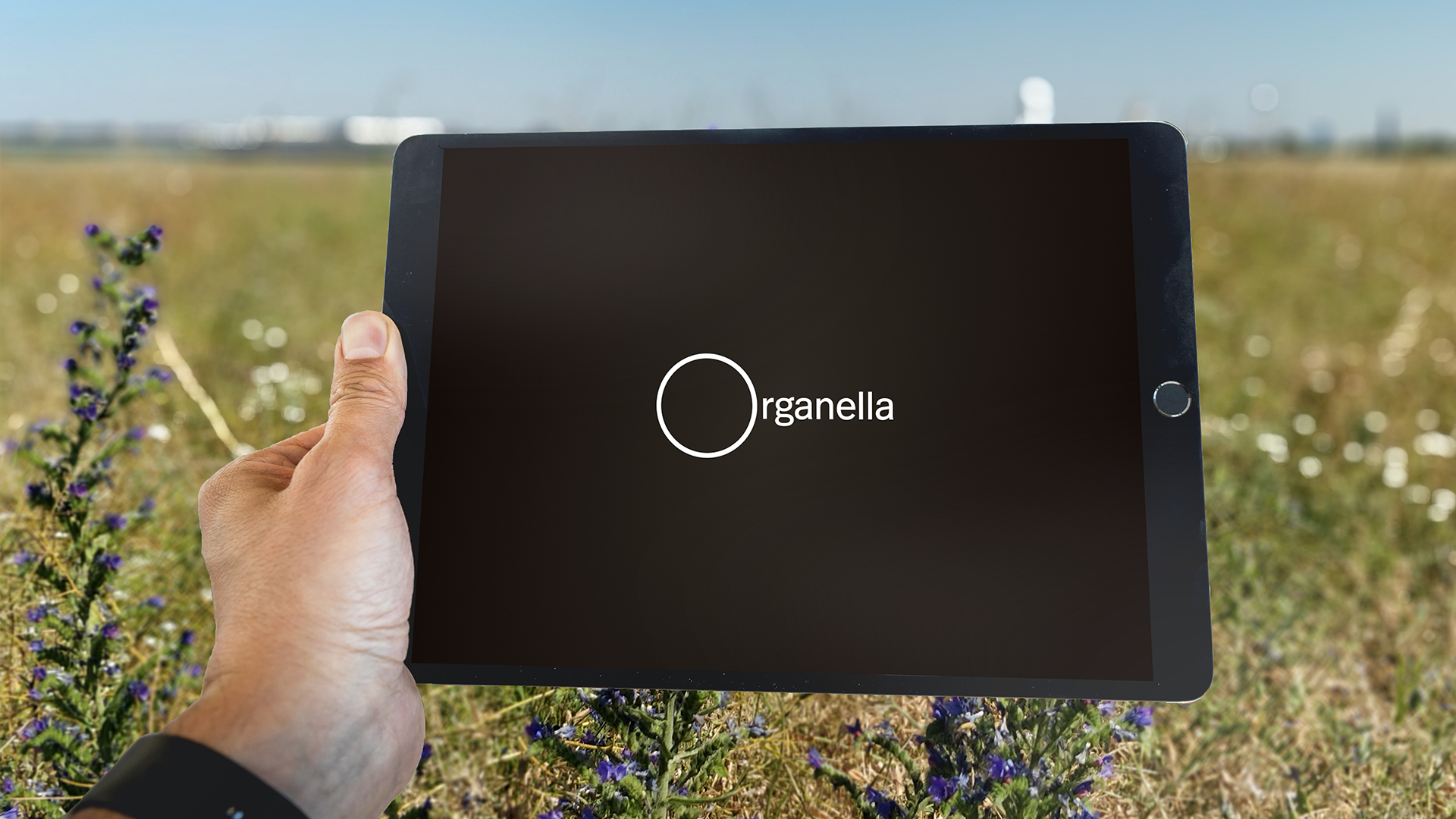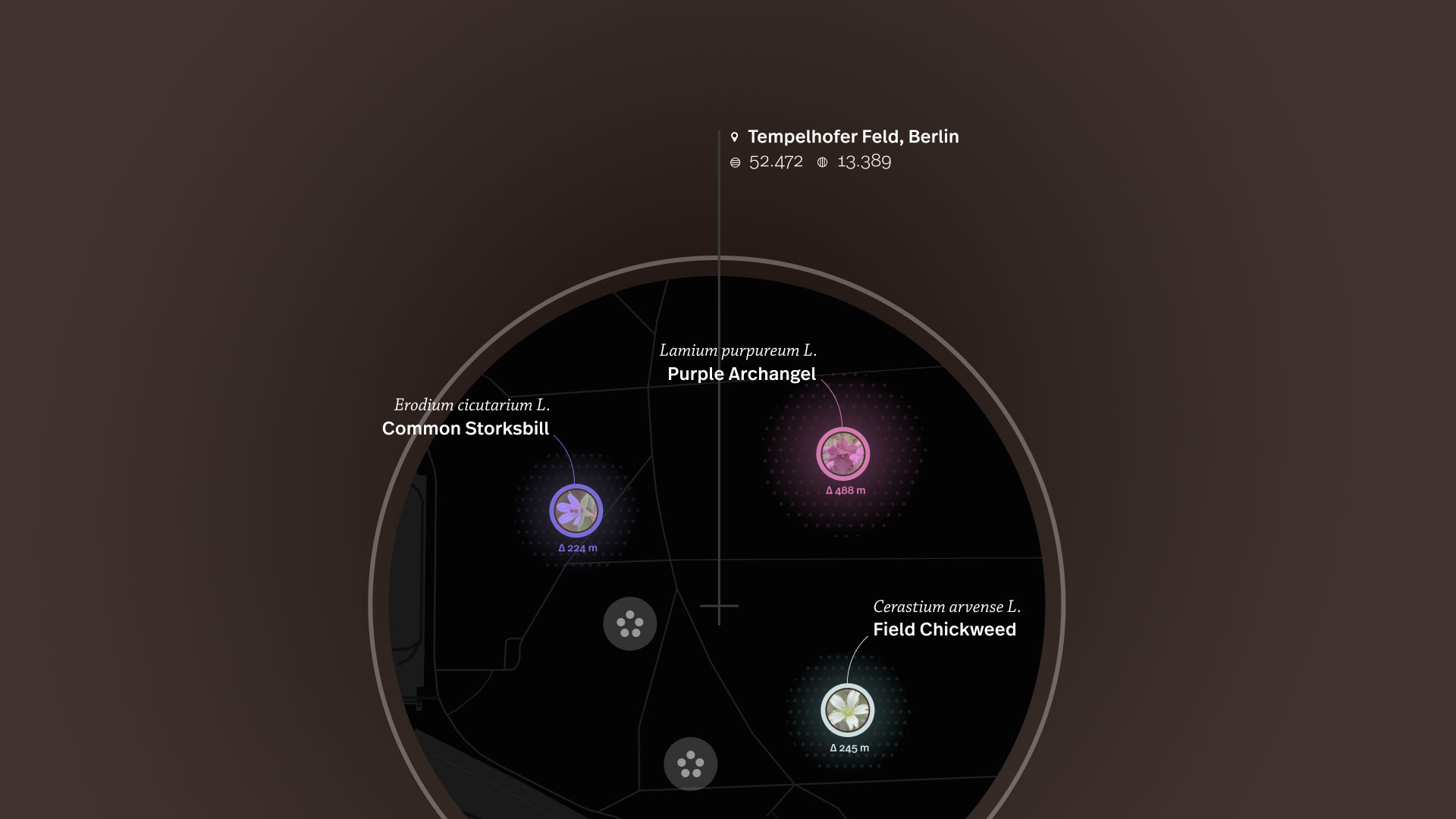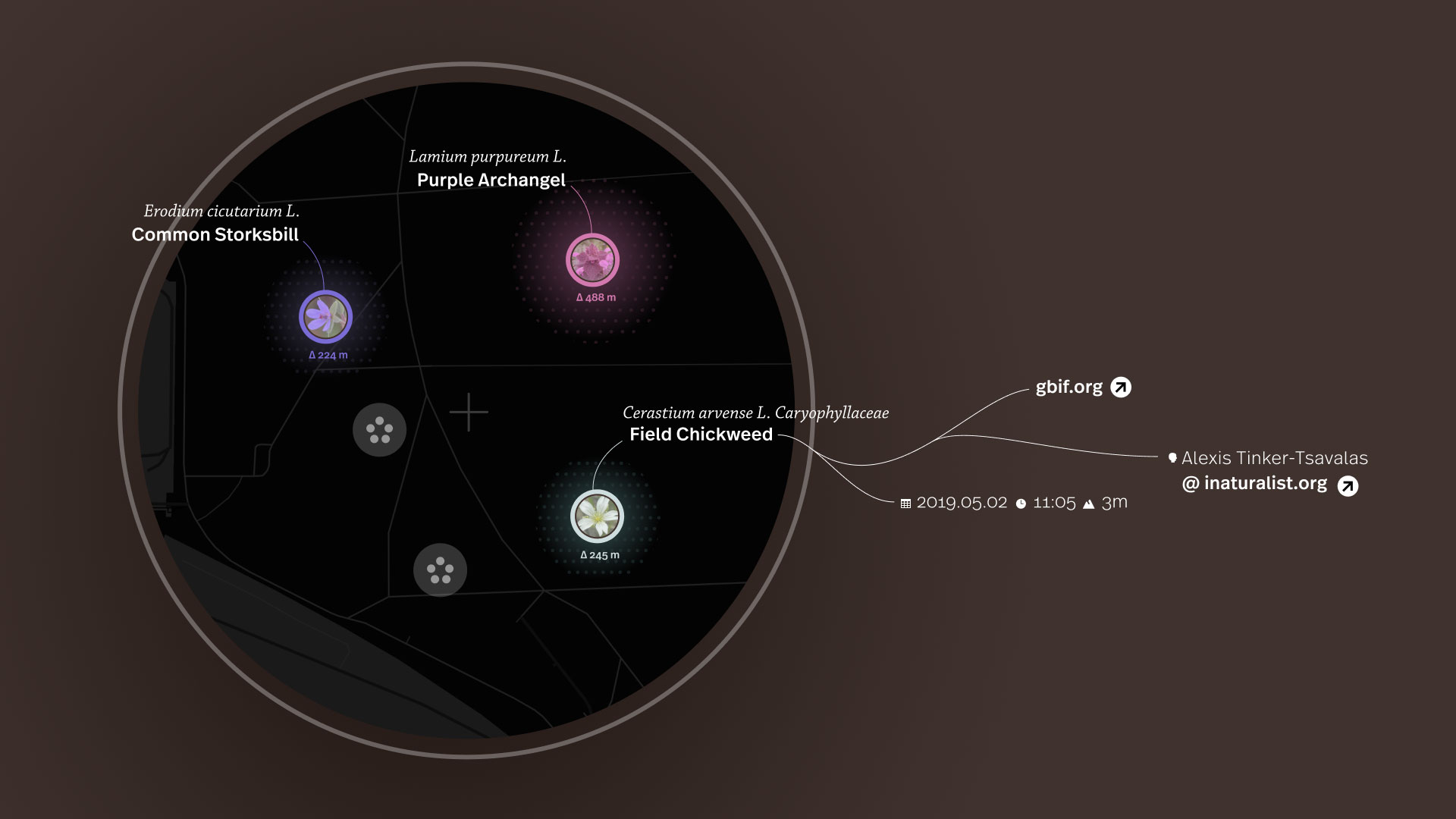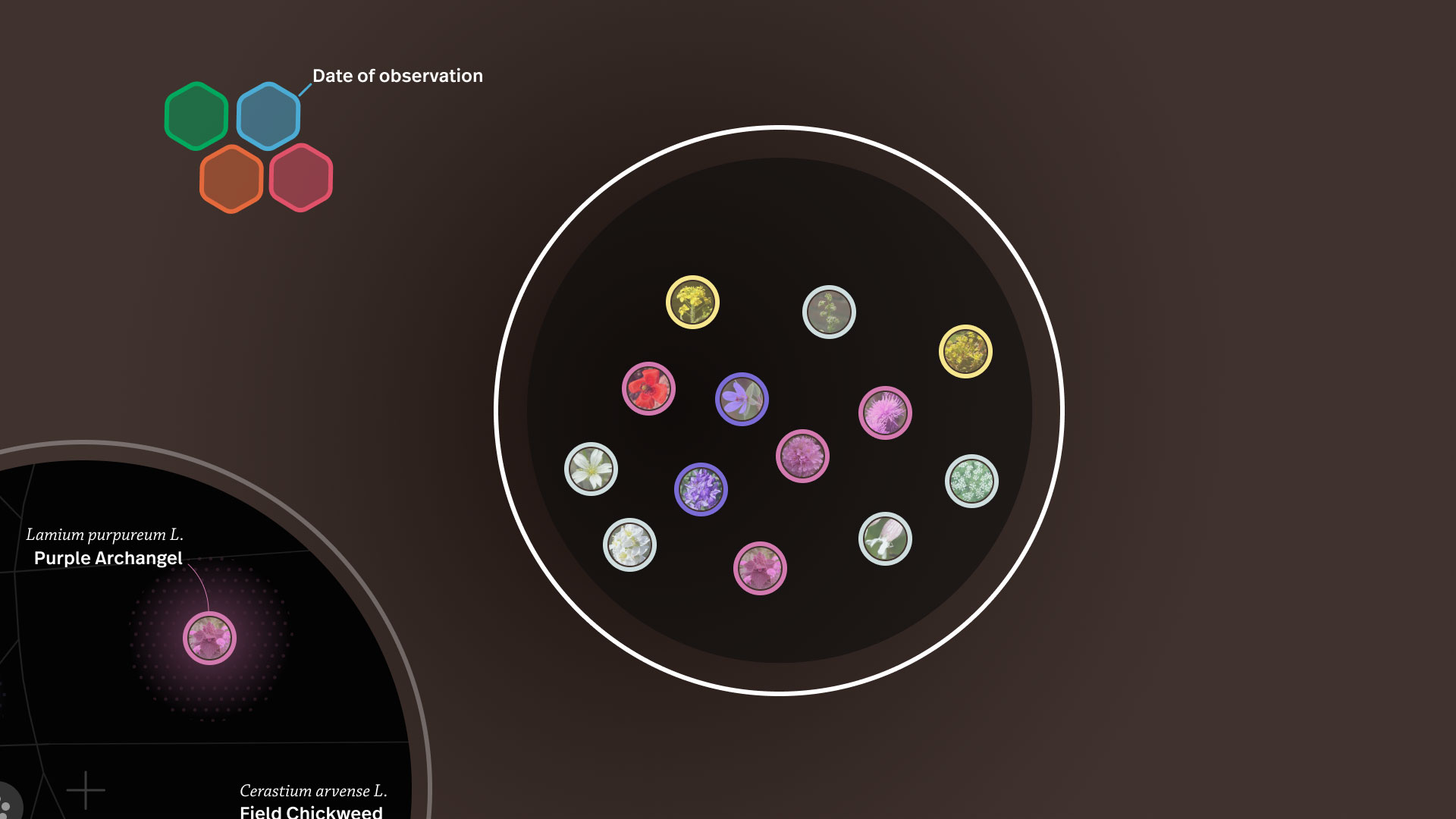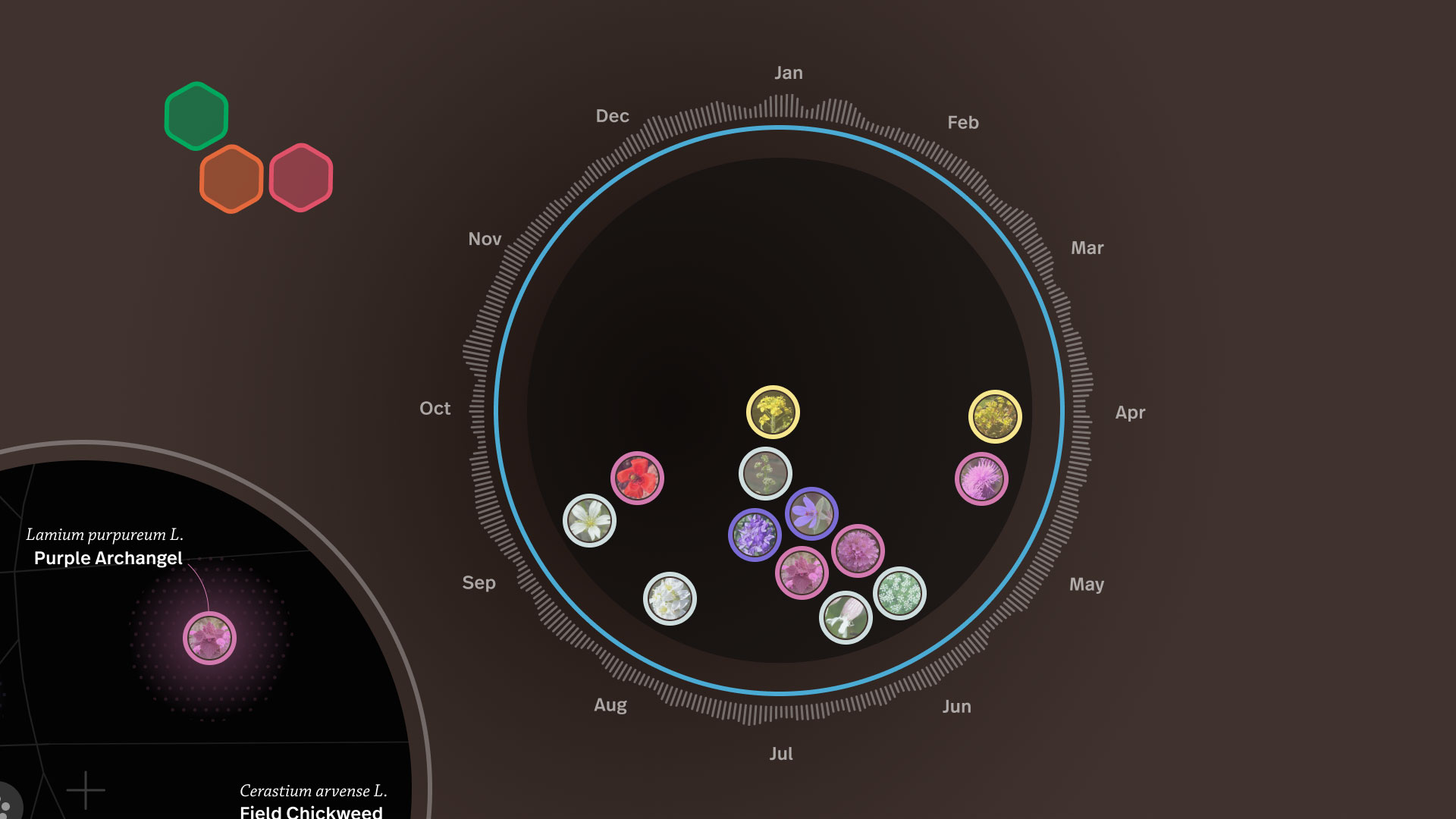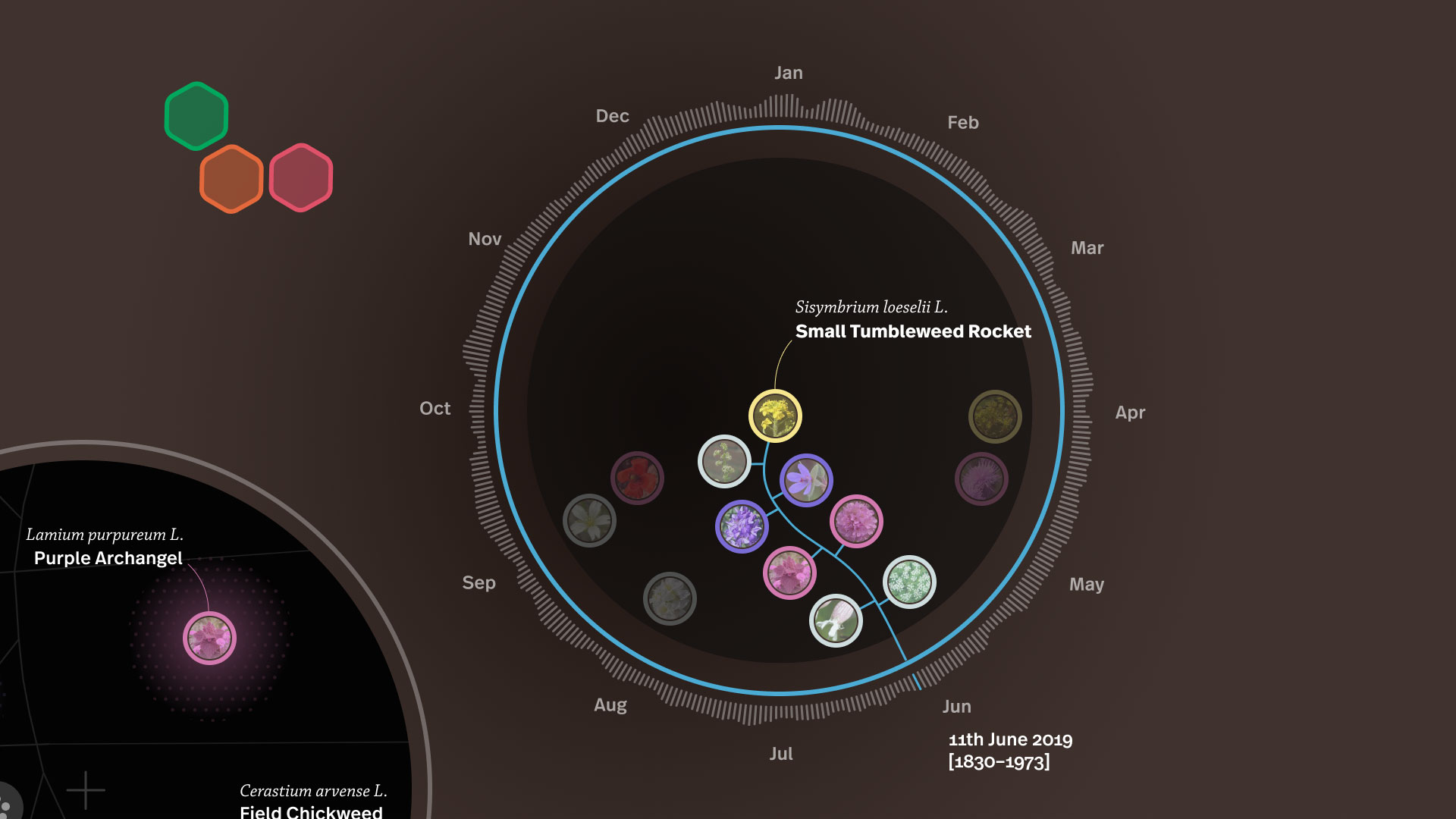Facing the environmental and natural challenges of the present, citizens play an increasingly important role in the field of biodiversity data. However, productively engaging with the data is complex, requires experience or scientific knowledge. That's why we created Organella, an experimental user interface that gives beginners playful, interactive and visual access to the world of GBIF.
